Abington School District v. Schempp, 374 U.S. 203 (1963), was a United States Supreme Court case in which the Court decided 8–1 in favor of the respondent, Edward Schempp, on behalf of his son Ellery Schempp, and declared that school-sponsored Bible reading and the recitation of the Lord's Prayer in public schools in the United States was unconstitutional.

Rose Hartwick Thorpe was an American poet and writer, remembered largely for the narrative poem, Curfew Must Not Ring Tonight (1867), which gained national popularity. It was translated into nearly every language of the world and was universally recognized as a veritable classic. Other poems followed, among them being "The Station Agent's Story", "Red Cross", and "In a Mining Town". Although a busy and prolific author, she was ill for some years. In 1888, she and her family moved to San Diego, California, living in Rosemere, Pacific Beach. Thorpe gave San Diego's "False Bay" the new moniker "Mission Bay" in a poem published in 1888 in The Golden Era; the name persists today.

Charles Baker (1803–1874), was an English instructor of the deaf notable for writing some of the earliest school text books suited to deaf children.

Emma Rood Tuttle was an American author and lecturer engaged in educational and reform work. Her literary work was versatile. It primarily included poetry and journalism, but also a considerable amount of lectures, essays, and contributions to journals. As a poet, she was a constant contributor to the leading reformatory journals, and frequently to the secular press. Sometimes, she collaborated with her husband, Hudson Tuttle, on books. Their home was a center of reformatory influence in Northern Ohio.
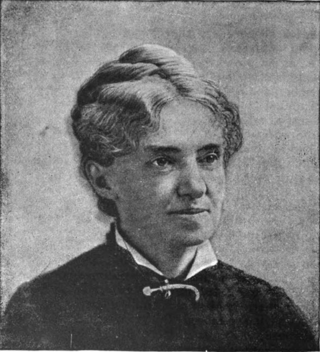
Abba Goold Woolson was a 19th-century American teacher, author, and poet from Maine. Woolson published several volumes, including: Women in American Society (1873); Dress Reform (1874); Browsing Among Books (1881); and George Eliot and Her Heroines (1887).
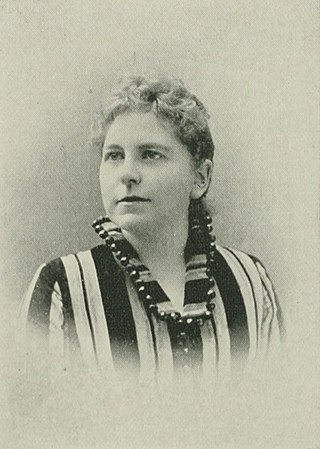
Elizabeth Marney Conner was a 19th-century American dramatic reader and educator, and the founder of the Buffalo School of Elocution. She published recitations in both prose and verse, and was also the author of an operetta.

Katharine O'Mahoney was an Irish-born American educator, lecturer, and writer. A teacher of poetry to Robert Frost, she was the author of Famous Irishwomen (1907). O'Mahoney was one of the first Catholic women in New England, if not in the United States, to speak in public from the platform. Among her lectures may be mentioned "A Trip to Ireland" (illustrated); "Religion and Patriotism in English and Irish History" (illustrated); "Mary, Queen of Scots", and "Joan of Arc" ; "An Evening with Milton, including recitations from Paradise Lost", illustrated with fifty views from Dore; "An Evening with Dante, including recitations from the Divine Comedy", illustrated by seventy-six views from Dore; and "The Passion Play of Oberammergau". She founded, and until marriage, edited and published The Sunday Register.
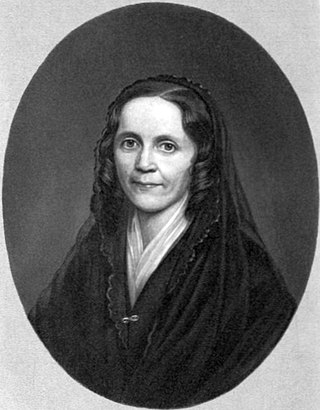
Frances Manwaring Caulkins was a 19th-century American historian and genealogist, the author of histories of New London, Connecticut and Norwich, Connecticut. Through her father, she was descendant of Hugh Caulkins, who came with Richard Blinman, the first minister of the Plymouth Colony. On her mother's side, her ancestry was noted in early English history, Sir Ranulphus de Manwaring being justice of Chester, in 1189–99; another, Sir William, was killed in the streets of Chester, defending Charles I on October 9, 1644. Her father died before Fanny was born, and her uncle, Christopher Manwaring, was exceedingly fond of his talented niece, aiding her with his library, and for seven years, she lived with him. When she wanted to start teaching, he set apart a room as her schoolroom. The first of her writings, now known to have been printed, appeared in the Connecticut Gazette on April 17, 1816.

Cora Stuart Wheeler was a 19th-century American poet and author. She was one of the most successful short-story writers of the day. It was during the civil war, as a girl in her father's committee-room at the Capitol, during President Lincoln's time, that ideas were formed which developed into her verse of later years. Wheeler, a well-known literary worker and journalist in her day, wrote verse, bits of humor, biographies, and racy, thrilling stories. She gave instructive, entertaining lectures, through which ran good-natured wit and purpose.

Lida Rose McCabe was an American writer, journalist, and lecturer. She is remembered as the first woman reporter who traveled to the Klondike. Her first book, Don't You Remember? (1884) was a reminiscence of Columbus, Ohio's early days. In the midst of an active newspaper life in New York City, she found time for the writing of other books, including The American Girl at College (1893) and Ardent Adrienne: The Life of Madame de La Fayette (1930), as well as magazine articles. McCabe contributed to the Popular Science Monthly, Lippincott's Monthly Magazine, McClure's, The Cosmopolitan, St. Nicholas Magazine, Book Buyer, The Outlook, The Bookman, and Town & Country, and syndicated all leading newspaper in the U.S. and abroad. She was also Paris correspondent for the New-York Tribune and the American Press Association (1889–90).

Corinne Stocker Horton was an American elocutionist, journalist, newspaper editor, and clubwoman. For years, she was the society editor of The Atlanta Journal, but withdrew from the staff after her first marriage. She continued to write for magazines, but was also a successful fiction writer. Horton was affiliated with the Players' Club of Atlanta, the Atlanta Woman's Club, and the Georgia Women's Press Club.
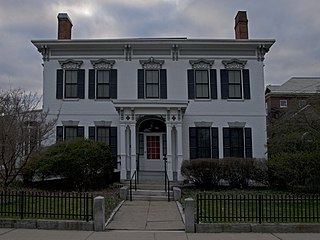
Miss Catherine Fiske's Young Ladies Seminary was a boarding and day school for young ladies, located in Keene, New Hampshire. Established in 1814, it achieved a national reputation. After the 1837 death of Catherine Fiske, the school's founder, the seminary continued to operate until the early 1840s. The property went through various changes but currently serves as the President's House at Keene State College.

Nellie A. Hope was an American violinist, music teacher, and orchestra conductor. She founded and conducted the first women's orchestra directed by a woman in the Twin Cities area, "Miss Hope's Ladies' Orchestra". The first orchestra at Macalester College was established by Hope. In Saint Paul, Minnesota, Hope was active in local music circles, her studios at the Chamber of Commerce Building being the center of a busy musical life.

Susanna M. D. Fry was an American educator and temperance worker. Her teaching career began in the primary department of the village school, but her superior ability as a teacher led her swiftly into positions of greater responsibility. Fry was a professor who held the chair of English literature at Illinois Wesleyan University, Bloomington, Illinois and at the University of Minnesota. She served as president of the Minnesota Woman's Christian Temperance Union (W.C.T.U.), and managing editor of The Union Signal, the organ of the National W.C.T.U. During her career as a professor and as an official of the W.C.T.U., Fry was a frequent speaker in Prohibition campaigns and at temperance conventions. Fry was the only woman chosen from the Methodist church to speak before the Parliament of the World's Religions, 1893.

Daniel C. Van Norman was a Canadian-born American educator, clergyman, and school founder.
Amelie Veiller Van Norman was a French-born American educator. She was the wife and successor of Rev. Daniel C. Van Norman in the proprietorship of the Van Norman Institute in New York City. She was a leader in movements for civic reform. She was the first president of the Jeanne d'Arc Suffrage League, and the vice-president of Le Lyceum Société des Femmes de France à New York. At the Paris Exposition of 1889, she received a gold medal for her work as an educator.
National School of Elocution and Oratory was an American school for speech arts, focused on rhetoric and elocution. It was established by Jacob and Rachel H. Shoemaker in Philadelphia, 1873. Attention was given to conversation and oratory, vocal culture, reading, and recitation. It awarded Bachelor's and master's degrees. From 1915, their daughter, Dora Adele Shoemaker, served as principal, renaming the school "Shoemaker School of Speech and Drama" and adding coursework in journalism and radio technique. The school closed in the late 1930s.

Julia A. Orum was an American educator, lecturer, and author. She was principal of the Philadelphia School of Elocution and of the Mountain Lake Park Summer School of Elocution. She was a successful Shakespearian reader and lecturer.
American Institute of Sacred Literature was an American adult education institution which focused on Christian and related religious texts. The work of the Institute embraced:
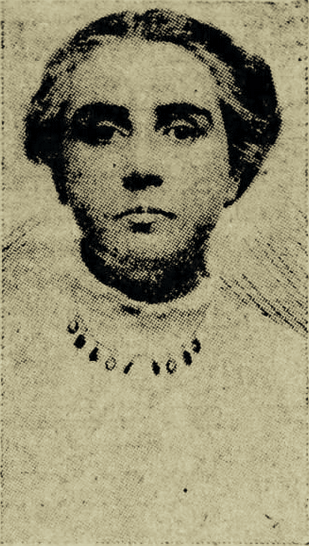
Georgia Alexander was an American educator, author, and editor of public school textbooks. Her book series included: Child Classics ; Alexander-Dewey Arithmetic ; and Graded Poetry. For many years, she served as district superintendent of schools in Indianapolis, Indiana, U.S.


















